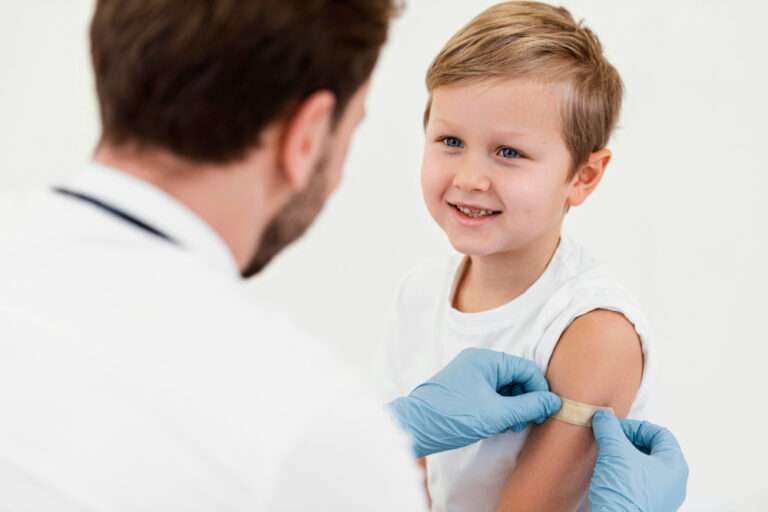Iron-Deficiency Anemia
Iron-deficiency anemia is a concern in children, and it can have a significant impact on their growth and development. Children are particularly vulnerable to this condition during certain life stages when their bodies have higher iron requirements. Here’s what you need to know about iron-deficiency anemia in children:
Causes:
- Dietary Insufficiency: A diet lacking in iron-rich foods is a common cause. Breastfed babies, in particular, need to start consuming iron-rich foods around six months of age because their iron stores from birth begin to deplete.
- Growth Spurts: During rapid growth periods, such as infancy and adolescence, the body’s iron needs increase.
- Chronic Infections or Inflammation: These conditions can affect the body’s ability to absorb and use iron.
- Blood Loss: Conditions that lead to chronic blood loss, such as gastrointestinal problems (e.g., intestinal parasites, celiac disease) or heavy menstrual periods in adolescent girls, can result in iron-deficiency anemia.
- Premature Birth: Premature babies may not have fully developed their iron stores and are at higher risk.
Symptoms: The signs and symptoms of iron-deficiency anemia in children can vary, but they may include:
- Fatigue: Children may appear unusually tired or weak.
- Pale Skin and Lips: The skin and lips may lose their healthy color.
- Slow Growth: Iron-deficiency anemia can affect a child’s height and weight gain.
- Irritability: Children with anemia may be more irritable or fussy than usual.
- Cold Hands and Feet: Poor circulation can lead to a sensation of cold extremities.
- Pica: Unusual cravings for non-food items like ice, dirt, or starch.
- Frequent Infections: Iron-deficient children may be more susceptible to infections.
Diagnosis: A healthcare provider can diagnose iron-deficiency anemia in children through various tests, including:
- Complete Blood Count (CBC): To check hemoglobin and red blood cell levels.
- Serum Ferritin: To measure iron stores in the body.
- Iron and Transferrin Levels: To assess iron and iron transport proteins in the blood.
- Stool Tests: To check for gastrointestinal bleeding.
Treatment: The treatment for iron-deficiency anemia in children typically involves:
- Dietary Changes: Increasing iron-rich foods in the child’s diet, such as lean meats, poultry, fish, fortified cereals, beans, and green leafy vegetables.
- Iron Supplements: If dietary changes alone are not sufficient, a healthcare provider may prescribe iron supplements.
- Management of Underlying Conditions: If the anemia is caused by an underlying condition like celiac disease or a gastrointestinal disorder, it is crucial to manage that condition.
- Regular Follow-Up: Children may need regular check-ups to monitor their progress and adjust treatment as necessary.
Preventing iron-deficiency anemia in children involves providing a balanced diet rich in iron, ensuring appropriate iron intake during growth spurts, and addressing any underlying health issues that may lead to anemia. Regular well-child visits and monitoring by a healthcare provider are essential to catch and address anemia early.
------------From our Sponsors------------









